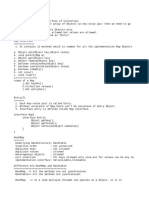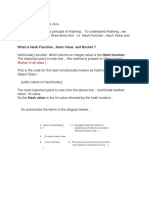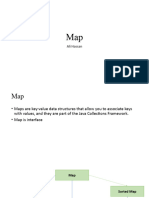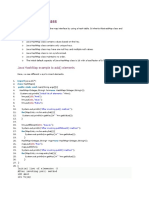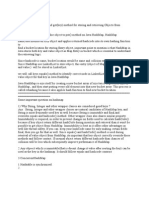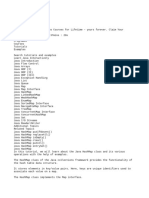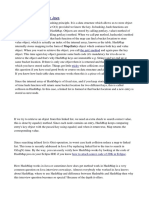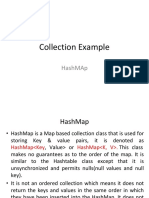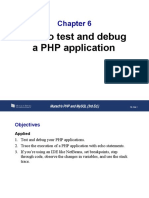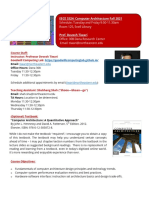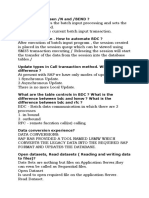0% found this document useful (0 votes)
88 views13 pagesHash Map
A HashMap is a Java class implementing the Map interface that stores data as key-value pairs, providing fast access through hashing. Key characteristics include allowing nulls, being unordered, and having efficient average time complexity for operations. It is not thread-safe, and for multithreaded environments, alternatives like ConcurrentHashMap should be used.
Uploaded by
benjudicaelleCopyright
© © All Rights Reserved
We take content rights seriously. If you suspect this is your content, claim it here.
Available Formats
Download as PDF, TXT or read online on Scribd
0% found this document useful (0 votes)
88 views13 pagesHash Map
A HashMap is a Java class implementing the Map interface that stores data as key-value pairs, providing fast access through hashing. Key characteristics include allowing nulls, being unordered, and having efficient average time complexity for operations. It is not thread-safe, and for multithreaded environments, alternatives like ConcurrentHashMap should be used.
Uploaded by
benjudicaelleCopyright
© © All Rights Reserved
We take content rights seriously. If you suspect this is your content, claim it here.
Available Formats
Download as PDF, TXT or read online on Scribd
/ 13









